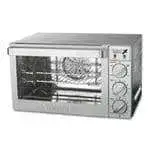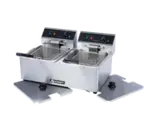
Pest Control for Restaurants: A Comprehensive Guide
- Common Fly Species in Restaurants
- Creating a Fly-Resistant Environment in a Restaurant
- Fly Control Methods for a Restaurant
For restaurant owners and managers, maintaining a clean and hygienic environment is paramount to the success of their business. One of the most common challenges in the foodservice industry is dealing with flies. These pesky insects can not only be a nuisance to customers but also pose serious health risks by contaminating food and surfaces. In this comprehensive guide, we will delve into the world of fly control, exploring common fly species found in restaurants, the health risks associated with flies, and effective strategies for creating a fly-resistant environment.
Common Fly Species in Restaurants
Before we delve into the strategies for fly control, it's essential to understand the common fly species that can infest restaurants. The most prevalent types include:
- House Flies: These are the most common and adaptable fly species found in restaurants. They are attracted to food and can transmit diseases by landing on surfaces after feeding on waste. House flies can quickly adapt to new environments, making them a persistent problem for restaurant owners. To tackle house flies effectively, consider implementing screens on doors and windows to prevent their entry, and educate your staff about the importance of promptly cleaning up spills and crumbs.
- Fruit Flies: Fruit flies are attracted to fermenting fruits and vegetables. They are often found around bar areas and in kitchens where fruits and vegetables are stored. These tiny flies can reproduce rapidly, leading to infestations if not controlled promptly. To combat fruit flies, regularly inspect and clean drains to eliminate breeding sites, and use fly traps with attractant baits strategically placed in problem areas.
Health Risks Associated with Flies
Flies are not just a minor inconvenience; they can pose significant health risks to both customers and restaurant staff.
Contamination of Food and Surfaces
One of the most significant concerns is the potential for flies to contaminate food and surfaces. Flies can carry a variety of disease-causing pathogens on their bodies and transfer them to food, utensils, and preparation surfaces. This contamination can lead to foodborne illnesses among customers, which can be disastrous for a restaurant's reputation and legal liability. To combat this, it's crucial to implement stringent food safety protocols and regularly inspect food storage areas to ensure flies cannot access stored products. Additionally, designate specific areas for food preparation and handling, keeping them separate from areas with potential fly exposure.
Creating a Fly-Resistant Environment in a Restaurant

Preventing fly infestations in your restaurant requires a multi-faceted approach. Here are key strategies to create a fly-resistant environment:
Proper Waste Management
Effective waste management is the foundation of fly control. Flies are attracted to rotting food, garbage, and organic matter. Implement the following waste management practices:
- Regular Removal: Ensure that trash is removed from the premises daily. Trash bins should have tightly sealed lids to prevent flies from accessing food waste. Additionally, schedule trash removal during non-operating hours to minimize fly exposure to customers. It's also advisable to install outdoor trash compactors to reduce the presence of food waste outside your restaurant.
- Cleaning Dumpsters: Clean and sanitize dumpsters regularly to eliminate food residue and odors that attract flies. Consider applying fly-repellent coatings or using dumpster covers to further deter fly infestations. Encourage your waste management service provider to maintain cleanliness and regular pickup schedules.
- Drain Maintenance: Keep drains clear and free of debris to prevent the buildup of organic matter that can attract drain flies. Routine drain cleaning and maintenance should be part of your restaurant's regular schedule. Additionally, install drain covers or screens to prevent flies from entering through drains.
Cleaning and Sanitation Protocols
Maintaining a clean and sanitary environment is crucial for fly control. Implement the following cleaning and sanitation protocols:
- Daily Cleaning: Assign staff to perform daily cleaning routines that include wiping down surfaces, sanitizing food preparation areas, and removing food debris. This daily cleaning routine should extend to both front-of-house and back-of-house areas. Consider using environmentally friendly cleaning products to minimize chemical exposure for both staff and customers.
- Deep Cleaning: Schedule regular deep cleaning sessions to reach hidden areas where flies may breed, such as cracks, crevices, and behind equipment. Pay particular attention to kitchen equipment, which can accumulate organic matter over time. Regularly inspect and clean exhaust vents and hoods in the kitchen to prevent grease buildup that can attract flies. Moreover, invest in professional-grade cleaning equipment and tools for thorough and efficient cleaning.
- Food Storage: Store food items in sealed containers to prevent access by flies. Regularly inspect and discard any spoiled or rotting food. Consider installing fly screens or curtains in food storage areas to create an additional barrier against flies. Furthermore, implement a "first in, first out" food storage system to ensure that older food items are used before newer ones, reducing the chances of spoilage.
Fly Control Methods for a Restaurant
In addition to proactive prevention, you can employ various fly control methods to combat existing fly infestations:
Physical Barriers
Installing physical barriers can help keep flies out of your restaurant. Consider the following measures:
- Air Curtains: Air curtains positioned over entrance doors create an invisible barrier that prevents flies from entering. These curtains blow a stream of air downward, creating an airflow barrier that flies have difficulty crossing. Periodically inspect and maintain air curtains to ensure they remain effective.
- Screened Windows and Doors: Install screens on windows and doors to keep flies out while allowing fresh air in. Ensure that screens are in good condition and free of holes or tears. Additionally, seal any gaps or openings around doors and windows to prevent flies from entering through cracks.
Traps and Baits
Fly traps and baits are effective tools for capturing and eliminating flies:
- Fly Traps: There are various types of fly traps available, including fly paper, electric fly zappers, and baited traps. These traps attract and capture flies, reducing their numbers. Place them strategically in areas where flies are most active. Regularly clean and replace fly traps to maintain their effectiveness.
- Fly Baits: Fly baits are substances that attract flies and contain insecticides. They can be placed strategically to lure and eliminate flies. It's essential to follow safety guidelines when using fly baits to prevent any harm to humans or pets. Position fly baits away from food preparation and dining areas to minimize the risk of contamination.
Deep Cleaning Equipment Solutions
Efficient and thorough cleaning is achieved with the right kitchen equipment. Elevate your cleaning protocols with our cutting-edge solutions:
- Commercial-Grade Cleaning Tools: There’s a range of commercial-grade cleaning tools designed to streamline your daily cleaning routines. From high-performance scrubbers to durable microfiber cloths, we have the tools you need for a spotless kitchen.
- Heavy-Duty Deep Cleaning Equipment: You can schedule regular deep cleaning sessions with heavy-duty equipment. Industrial-strength steam cleaners and power washers reach hidden areas where flies may breed, ensuring a comprehensive cleaning approach.
- Food Storage Solutions: Store food items in containers to prevent access by flies. Storage solutions are designed to keep your ingredients fresh and protected from contamination.
Fly Control For Restaurant With Open Doorways

Controlling flies in a restaurant with open doorways can be challenging, but with a comprehensive strategy, you can minimize their presence and maintain a clean and pleasant environment. Here's a guide for effective fly control:
- Install Air Curtains: Air curtains create an invisible barrier at open doorways, preventing flies from entering. Install air curtains above entrance doors to create a continuous stream of air that discourages flies.
- Use Mesh Screens: Mesh screens act as a physical barrier, allowing fresh air while keeping flies out. Install mesh screens on open windows and doorways. Ensure screens are in good condition without any tears.
- Strategic Placement of Fly Traps: Fly traps attract and capture flies, reducing their numbers. Place fly traps near open doorways, especially those leading to outdoor dining areas. Consider electric fly zappers, baited traps, or traditional fly paper.
- Regular Cleaning of Outdoor Areas: Remove potential breeding sites and attractants for flies. Regularly clean outdoor dining areas, paying attention to spills, waste bins, and any standing water.
- Implement Proper Waste Management: Minimize food waste that attracts flies. Ensure tightly sealed lids on outdoor trash bins. Schedule regular trash removal and cleaning of dumpsters.
- Maintain Landscaping: Prevent outdoor areas from becoming conducive to fly breeding. Remove standing water from flowerpots, trays, or any outdoor containers. Choose fly-repelling plants for landscaping.
Natural Remedies and Prevention
Incorporating natural remedies and prevention measures can complement your fly control efforts:
Essential Oils and Herbs
Certain essential oils and herbs are known to repel flies. Consider using these natural repellents in your restaurant:
- Lavender: Lavender sachets or oil diffusers can deter flies with their fragrance. Place them near entry points or dining areas to create a fly-repellent atmosphere. Additionally, consider growing lavender plants in outdoor dining areas to naturally deter flies.
- Basil: Planting basil around outdoor dining areas can help repel flies. The strong aroma of basil acts as a natural deterrent. Encourage customers to pluck fresh basil leaves for added fragrance and protection.
Proper Landscaping Practices
Landscaping can play a significant role in fly prevention, especially in outdoor dining areas:
- Remove Standing Water: Stagnant water sources, such as puddles or uncovered drains, can attract flies. Regularly inspect your outdoor dining space and ensure proper drainage to prevent standing water.
- Choose Fly-Repelling Plants: Some plants naturally repel flies due to their scent or properties. Consider planting marigolds, mint, or rosemary in outdoor areas to deter flies.
Restaurant Pest Control Services
For severe or persistent fly infestations, it's advisable to collaborate with pest control professionals:
Regular Inspections
Schedule regular inspections with pest control experts who can identify potential breeding sites and areas of concern. They can provide recommendations for addressing fly infestations effectively.
Safe Chemical Solutions
In cases where natural remedies and other methods prove insufficient, pest control professionals can apply safe chemical solutions to target fly populations. These treatments are typically low-risk for humans and pets when applied correctly.
Employee Training and Awareness
Your staff plays a crucial role in fly control efforts. Educate your employees on hygiene practices and the importance of maintaining a fly-resistant environment:
Be aware of local health department regulations related to fly control in restaurants. Ensure that your fly control efforts align with these regulations to avoid potential fines or closures.
If you encounter a severe fly infestation that seems difficult to manage, don't hesitate to seek advice from experienced pest control professionals. They can provide tailored solutions to address your specific situation, including specialized treatments and ongoing monitoring.
Conclusion
Maintaining a fly-resistant environment is not only essential for the health and safety of your customers and staff but also for the success and reputation of your restaurant. By implementing the strategies outlined in this comprehensive guide and staying vigilant in your fly control efforts, you can create a welcoming and hygienic dining experience even in the face of these persistent pests.




